Bordered dracaena is considered an unpretentious plant. It is easy to grow it in room conditions. But we must not lose sight of the problems that can lead to the death of a plant. Proper care and care will help preserve the decorative properties of dracaena.
Material Content:
Dracaena edged: description and tips for growing
Dracaena bordered by unpretentious care, so it is often grown at home. Its trunk is lignified, leaves up to 50 cm long and 1 to 2 cm wide are most often dark green in color. Variegated varieties with yellow and reddish-purple stripes are found.
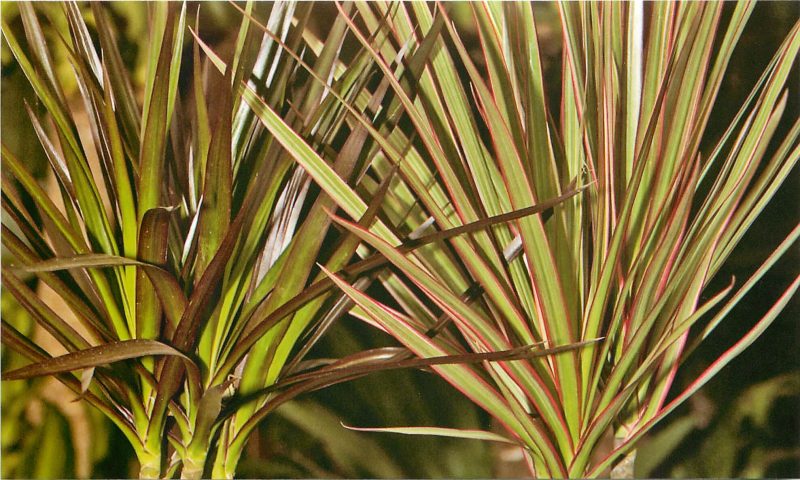
In adulthood, the decorativeness of fringed dracaena increases. Leaves remain only at the top of the trunk, lower leaves fall off, leaving characteristic scars. The plant becomes like a house palm.
Dracaena is resistant to dry air, but loves spraying with warm water. Watering should be regular and moderate. Variegated varieties require brighter lighting to preserve the decorative color of the leaves.
A permanent place for dracaena is chosen light, but without direct sunlight. She does not like drafts and sudden changes in air temperature.
Home Care
Despite the fact that the homeland of indoor dracaena is a country with a warm, tropical climate, they do not like high air temperatures.
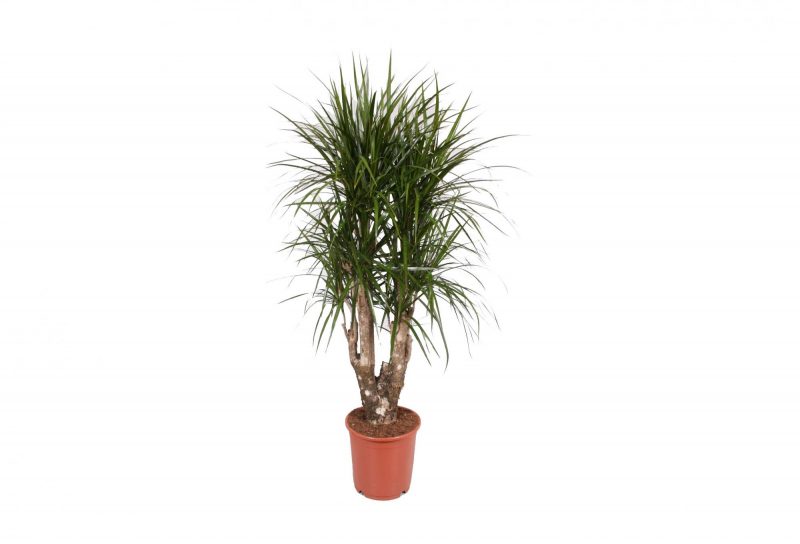
Favorable for the growth and development of plants is considered:
- summer temperature from 16 to 18 ° C;
- and winter - not lower than 12 ° C.
Dracaena does not like the excess of sun. Preferred for her diffused light or partial shade.Variegated varieties can not be placed in the back of the room, they will lose their decorative color, it is enough to protect them from direct sunlight at the south window. Dracaena leaves quickly covered with dust, you need to wipe them with a damp sponge or spray.
Watering from spring to autumn should be regular and plentiful. It is important to prevent stagnation of water at the roots.
In winter, moderate watering is sufficient. Fertilize dracaena from March to September. It is preferable to choose a liquid complex fertilizer on an organic basis.
Top dressing is done once every two weeks, alternating between root and extra root. For a nutrient solution intended for spraying on leaves, the concentration is made weaker than for root fertilizer.
How to transplant a plant

Dracaena is transplanted in spring or June, young plants - annually, large 1 time in 3 years:
- In the pot a little larger than the previous one, pour drainage.
- Then comes the soil for dracen or palm trees. Universal soil is also suitable. It is important that its acidity is in the region of 6 - 6.5, if it is lower, spots may appear on the leaves, the edges blacken.
- Holding dracaena by the trunk, they take it out of the pot and reload it into a new landing tank.
- The root system of the plant is superficial, so it is advisable to do high drainage.
Land for transplanting can be prepared independently from humus, leaf, sod land and peat in the ratio: 1: 1: 2: 0.5. Pebbles, expanded clay or pieces of polystyrene are suitable for drainage.
Propagation of dracaena bordered
Dracaena propagated by seeds and cuttings. Planting seeds is carried out in early spring. The method is not common due to the fact that the fringed dracaena rarely blooms. A more effective method of propagation is cuttings.
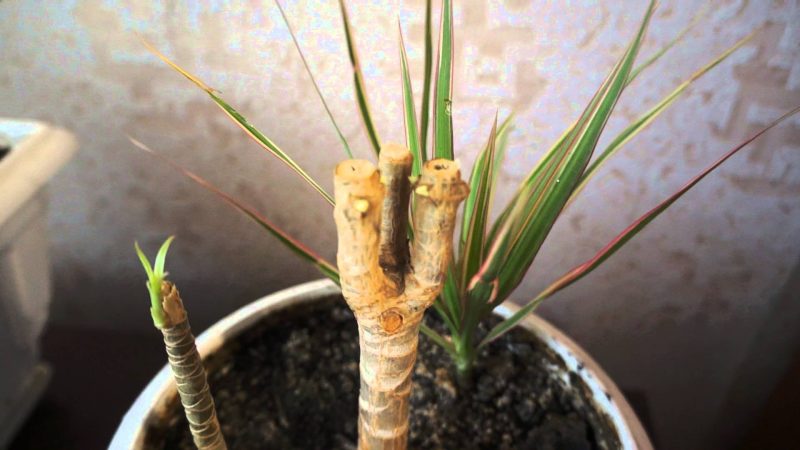
With a knife, cut off the apical shoot or part of the trunk, put in spring water. So that the stalk does not rot, 1 tablet of activated carbon is dissolved in 1 liter of water.
Or rooted in wet sand, then covered with a transparent bag. Slices on Dracaena are covered with crushed activated carbon or wood ash.
Problems that flower growers may encounter
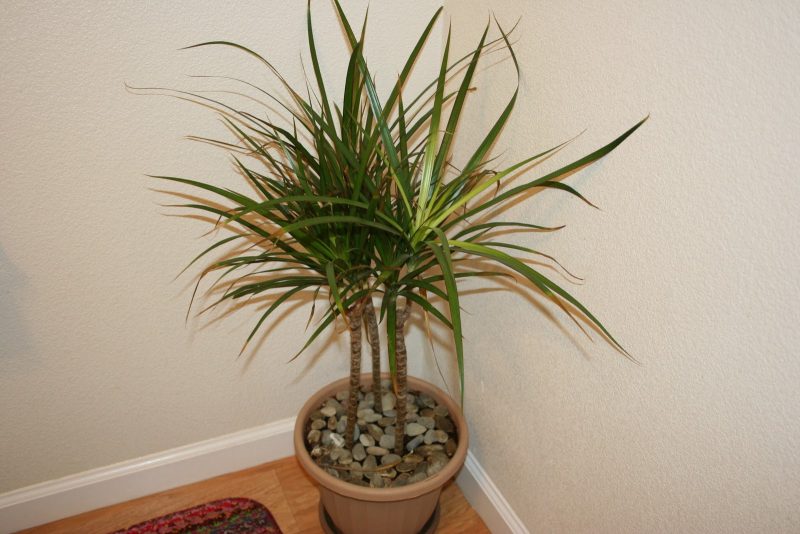
Growing a dracaena, one may encounter some difficulties:
- rotting of the roots occurs due to stagnation of water in the pot;
- dry air or drafts can change the color of leaves; their tips or edges may turn brown;
- leaves are curled if the air temperature is too low;
- with dry air or lack of nutrition, leaf plates turn yellow;
- dry light spots appear in intense light.
Weakened plants are more susceptible to pest damage.
Pests, diseases and methods of dealing with them
Pests on Dracaena settle in the same way as on other indoor plants. This most often occurs in the summer in the garden or on the veranda.
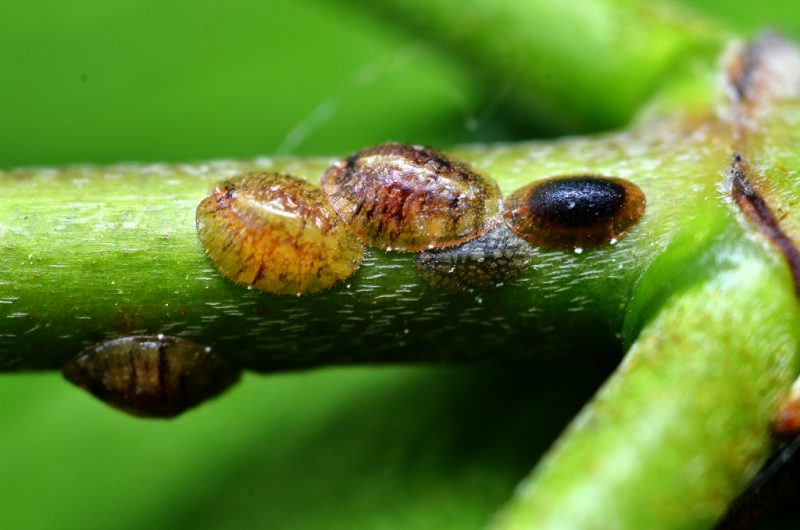
- Scabies can be found on leaves and stems. You can determine its presence by drying and yellowing of the dracaena, it begins to grow more slowly and may even die. To destroy the pest, the leaves are treated with a contact insecticide or watered with a systemic preparation under the root. If the lesion is severe, then repeated treatment with chemicals is required.
- The yellowness of the leaves may indicate a spider mite. Most often it is found where there is dry air. To combat the pest, you need to treat the plant with acaricides.
- There are one more insects of black color because of which the dracaena become stained and grow more slowly - these are thrips. When they move through the plant, silver stains remain on the leaves. To kill tiny pests, the leaves are treated with a soapy solution or insecticide.
- When the purchased plant begins to disappear before our eyes, despite the correct watering, feeding and care, you need to examine its roots. Sometimes in greenhouses, dracaena is infected by a nematode. It is difficult to notice this insect with the naked eye, swelling and nodules on the roots can speak about its presence.There are no preparations for the nematode (nematicides) for indoor plants, they are toxic and are used only in agriculture. Therefore, it is better to throw out the sick dracaena by cutting cuttings from it for rooting.
The plant and diseases are affected. Leaf spotting is most common, caused not only by microorganisms and viruses, but also by improper care.
- With excessive watering, air does not flow to the roots, the tips of the leaf plate may blacken, root rot develops.
- If the air is not humid enough, the leaves dry, turn yellow and fall off.
- In the event of a sharp temperature drop or a cold draft, spots may appear on them.
To save the flooded plant, it must be transplanted.
The roots are cleaned of old soil, washed, cut all rotted and diseased to a healthy tissue, and treated with fungicide. If it is impossible to save the plant, cut off the top and root.
Plant Related Features
Dracaena is considered a tree of happiness and love. This is due to the legend of a poor young man who came to marry the daughter of a leader. An angry father, stuck his staff in the ground and said that the engagement will take place only if green leaves appear on the dry staff.
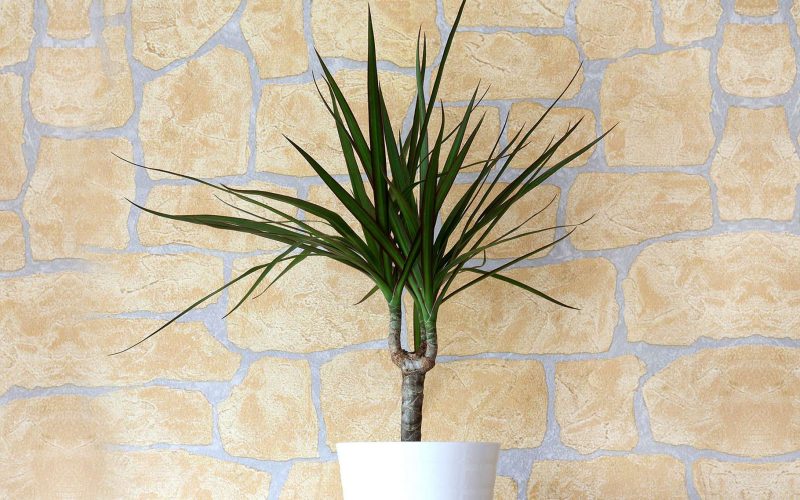
The young man diligently watered the stick, and after a month the leaves really grew on it - it was a dracaena. Since then, it is believed that one who cuts off part of the trunk of a plant at midnight will be happy in love.
Dracaena is recommended to grow people insecure, it is believed that it helps its owner to increase self-esteem, achieve success in the professional field. Being in the house of a single person, the plant will attract love and help you find your soul mate.












